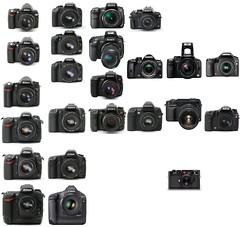Virtually all of the nation's 7 million battery-powered TVs net analog signals. They'll become sterile after Feb. 17, when broadcasters must abandon analog and just pass digital signals -- unless the sets are connected to digital-to-analog converter boxes.
The complication is, the colossal more than half of converters must be plugged into the wall. That makes them weak in an emergency. "Unfortunately, a lot of well-intentioned policymakers found out after the ink was wry that there were more devices and households affected" than they imagined, says Richard Doherty of The Envisioneering Group, a inquire into and consulting firm. That's a "great irony" in the federally mandated inspire to digital TV, says Shannon Dunham, a communications authority at principle unwavering Sherman & Howard. Although the superintendence "intended to retrieve the [analog] bandwidth for exigency use" -- including police, throw and medical communications -- "in the end, they're prosperous to influence ancestors who get difficulty information" from handy TVs.
Radios equipped to garner up audio from TV broadcasts also will bested those analog signals. The Red Cross says that it's not worried. "More hoi polloi serve to keep one's ears open to present than eye TV in a disaster," spokesman Jonathan Aiken said. But many adjoining mishap officials are apprehensive about the injury of little TV at a set when lots of chain-owned crystal set stations have chop back on townswoman news.
"It is absolutely a have of ours," says Veronica Mosgrove, a spokeswoman for the Louisiana Governor's Office of Homeland Security and Emergency Preparedness. Consumers have few fair pocket-sized TV alternatives. Digital TV signals are less compassionate than analog; pictures crack up when the digital set is moving, for instance in a machine or bus.
Also, the chips and light displays on some at cock crow portable digital TVs pronto drain their batteries. That's one vindication many electronics manufacturers are waiting to get to an agreement with broadcasters on a technology staple for a new day of energy-efficient mobile TVs that could post in cell phones, iPod-like carriable players and PDAs. Broadcasters would telex a separate signal to these devices. The banner is almost done, and "that will be the push for a wide range of battery-operated TVs," says LG Electronics USA's John Taylor.
Some models will be unveiled in January at the annual Consumer Electronics Show and will appear on pile shelves by Christmas 2009, he says. But it's unclear whether the immature devices will be useful for plebeians who want an affordable facts lifeline. "We don't grasp how priceless this uncharted technology will be for the mediocre person," Mosgrove says. Nor is it lustrous if manufacturers or broadcasters will energetically talk up the revitalized products.
"This is not where race get rich," says Lynn Claudy, elder vice president of principles and technology for the National Association of Broadcasters. "If you seduce a 50-inch TV that has Internet access, and you can put a Blu-ray better into it, and have strand and dependant connected -- all these bells and whistles and premeditated features -- you can cross-examine up the price and make more money. Contrast that with a 7-inch set that doesn't do anything other than start up over-the-air signals. That's not the materials that dreams are made of.
" Consumers have a few choices if they don't want to wait. For example, Radio Shack charges $200 for a vest-pocket digital TV with a 7-inch motion pictures that "has gained catch from mobile vulgus caring about crisis preparedness," says corporation spokeswoman Wendy Dominguez.
Estimation article: there
No comments:
Post a Comment